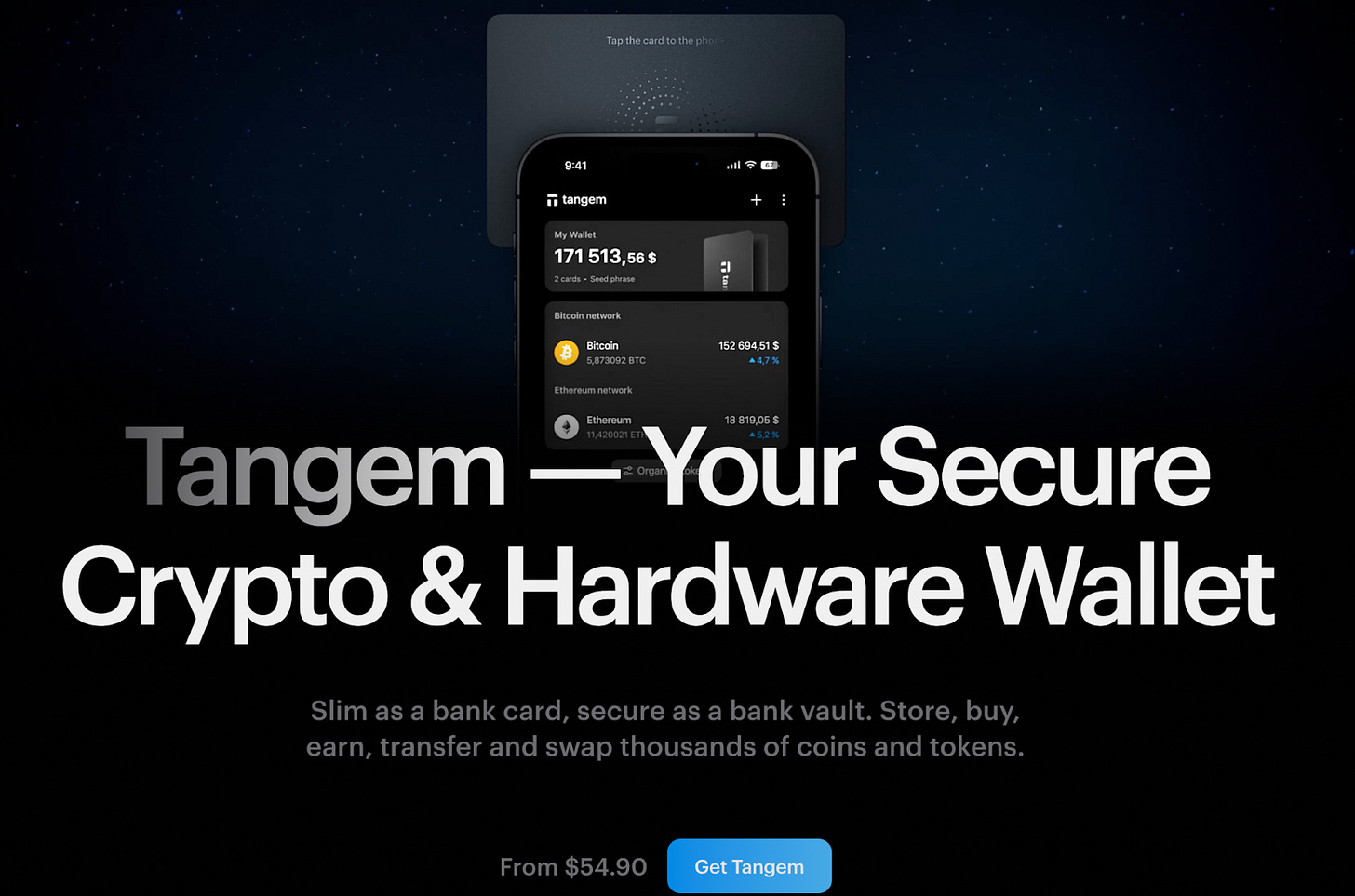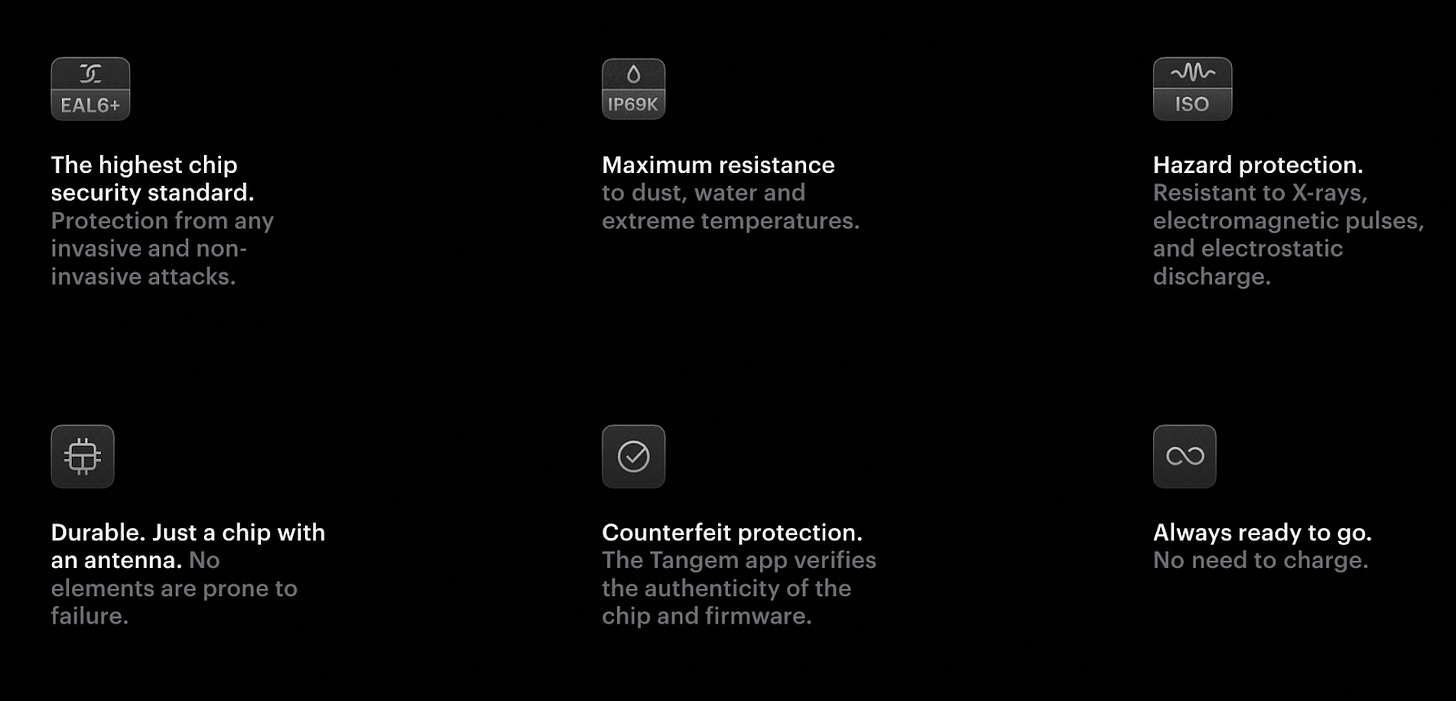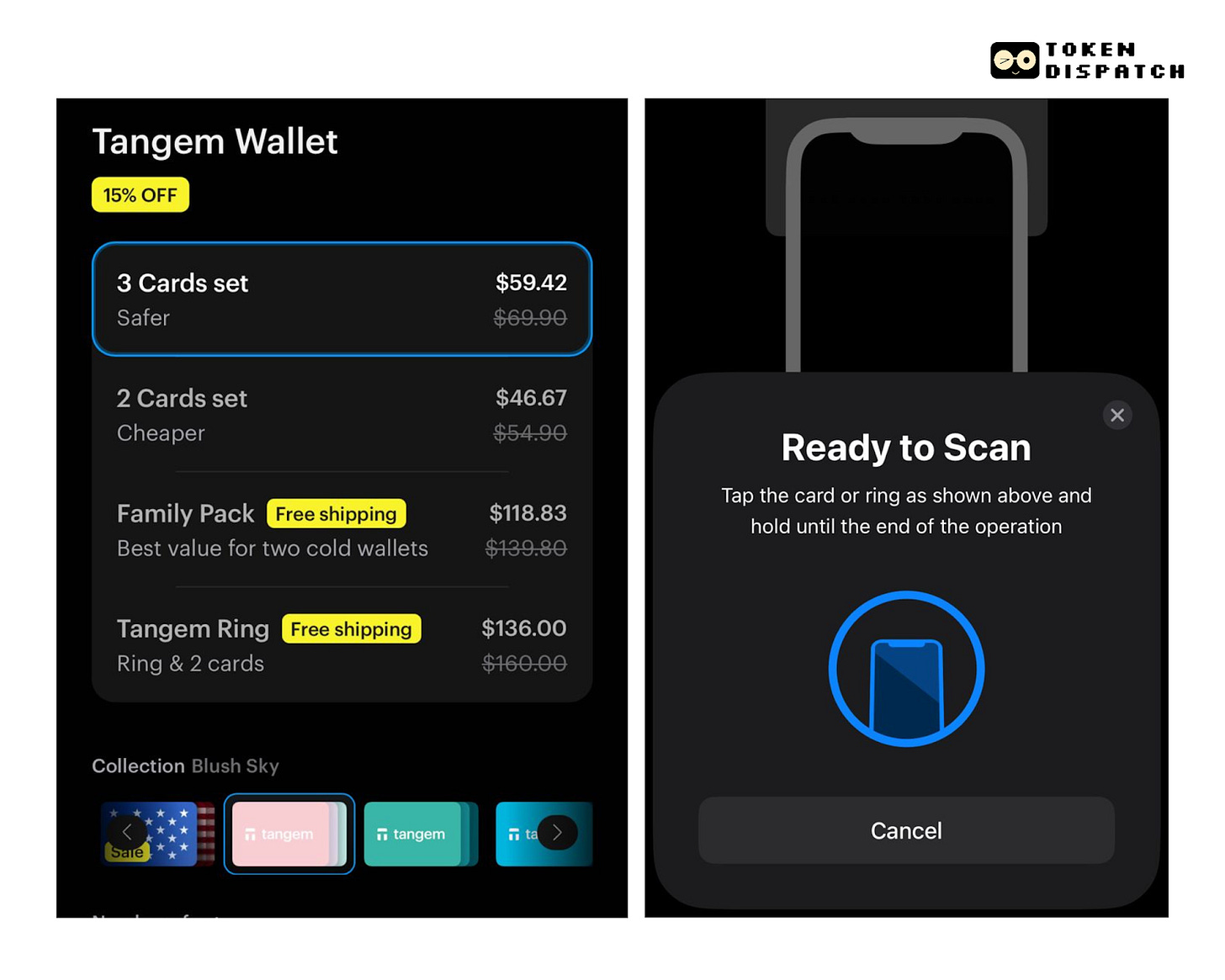Why Tangem Users Never Worry About Lost Seed Phrases 🛟
The Swiss company that turned crypto security into a simple tap-and-go experience with multiple backup cards.
The irony would be funny if it weren't costing people fortunes. We've built the most secure cryptographic systems in human history, then asked users to write down the master key on a piece of paper.
That piece of paper, your 12 or 24-word seed phrase represents mathematical perfection undermined by human reality. The words themselves are bulletproof. The cryptography is unbreakable. But the moment you write them down, photograph them, or type them into any device, you've created an attack surface that didn't exist in mathematics.
2025 proved this paradox devastating. $2.1 billion stolen from crypto users, with over 80% coming from private key exploits and front-end compromises. Not smart contract bugs. Not protocol vulnerabilities. Not sophisticated cryptographic attacks. Simple, old-fashioned theft of the words that unlock everything.
Countless phishing sites collecting seed phrases from users who thought they were connecting to legitimate platforms. Social engineering attacks that convinced people to share their recovery words over phone calls. The same pattern, repeated thousands of times: perfect cryptography defeated by imperfect humans.
A Swiss company called Tangem looked at these numbers and reached a conclusion: the problem isn't that people are bad at protecting seed phrases. The problem is the seed phrases themselves.
What Is Tangem?
Tangem isn't trying to build a better Ledger or Trezor. Instead, the Swiss company has created a credit card-sized hardware wallet that eliminates seed phrases altogether.
Founded in 2017 and backed by $23 million in funding (including a notable $15 million from SBI Crypto). Their approach is deceptively simple yet technically sophisticated: store your private keys in an EAL6+ certified secure chip, the same standard used in electronic passports, embedded in a card thin enough for your wallet.
The genius part? You get 2-3 identical cards that all contain the same private key. Lose one? The others still work. Forget a PIN? Reset it with another card. No 24-word phrases to memorise, write down, or hide under your mattress.
"The seed phrase is the primary threat by far. Without having a seed phrase, basically you cannot become a victim of phishing because you just don't have it," says CEO Andrey Kurennykh.
What happens when you remove the weakest link?
Tangem's approach sounds simple until you think about the implications: what if hardware wallets didn't need recovery phrases at all?
Instead of one device backed up by words on paper, you get multiple identical devices backed up by... more devices. Each Tangem card contains the same secure chip, the same private keys, the same access to your funds. Lose one? Use another. Need to send crypto from a different location? Grab a backup card from wherever you stored it.
The mathematics stay perfect. The cryptography remains unbreakable. But the human element, writing, storing, remembering, and protecting seed phrases, disappears entirely.
This elimination of the recovery phrase directly addresses the attack vectors that dominated 2025's losses.
Phishing sites can't steal seed phrases that don't exist.
Social engineering can't trick you into sharing words you never needed to know.
Physical theft of written backups becomes impossible when there's nothing written to steal.
How Tangem Actually Works
The technical architecture behind Tangem's apparent simplicity is remarkably sophisticated. Each card contains a Samsung-developed secure element certified at Common Criteria EAL6+, which is one of the highest security ratings available, surpassing even most banking systems.
Here's the process: When you initialise your Tangem wallet, the chip's Hardware True Random Number Generator creates a 256-bit private key that never leaves the secure element. Not during setup, not during transactions, not ever. The key is generated offline and stored in tamper-resistant hardware that will physically destroy itself if someone tries to extract the key.
To use your wallet, you simply tap the card on your NFC-enabled smartphone. The Tangem app (which is fully open-source) provides the interface, but all cryptographic operations happen inside the card's secure chip. Want to send Bitcoin? The app prepares the transaction, you review it on your phone, tap your card to sign, and the transaction broadcasts to the network.
The backup system is equally elegant. During setup, you tap your additional cards to securely clone the private key using encrypted card-to-card communication. All cards then function identically, you can use any of them to access your funds, and you only need one to recover everything.
Features:
Tangem has built far more than a storage device. The platform supports over 85 blockchains natively, covering everything from Bitcoin and Ethereum to newer networks like Base, Arbitrum, and Solana. That's over 13,000 cryptocurrencies and tokens manageable from a single wallet.
DeFi Integration: Unlike traditional hardware wallets that require clunky desktop apps, Tangem integrates WalletConnect directly into its mobile app. This means you can use your hardware-secured wallet with Uniswap, Aave, OpenSea, or any Web3 application. The security of cold storage with the convenience of a hot wallet.
Native Staking: The app includes built-in staking for major Proof-of-Stake networks including Solana, Cosmos, Polygon, and Binance Smart Chain. You can stake directly through the interface, track rewards, and compound earnings, all while your keys remain safely isolated in the hardware chip.
Tangem Express: The integrated exchange aggregator pulls rates from providers like 1inch, ChangeNOW, and centralised exchanges to give you the best swap rates. You can buy crypto with fiat through partners like MoonPay, or swap between assets without ever exposing your private keys to external services.
The Ring Factor: Tangem's most ambitious product is the Tangem Ring, a ceramic smart ring containing the same EAL6+ secure chip. You literally wear your wallet. The ring includes two backup cards and offers the same security as the cards but in a form factor that makes spontaneous crypto transactions as simple as tapping your hand to your phone.
Why This Approach Works
Tangem's security model addresses the specific attack vectors that have dominated 2025's loss statistics.
Traditional hardware wallets still require seed phrases for backup, those 12 or 24 words that represent your entire crypto fortune. If someone obtains your seed phrase through phishing, social engineering, or physical theft, they own your crypto regardless of where you stored the original hardware.
Tangem eliminates this vector entirely. There are no seed phrases to steal because there are no seed phrases to begin with. The private key exists only in the secure chips of your cards, protected by:
EAL6+ certification: Higher security rating than most competing wallets
Tamper resistance: Physical attacks trigger chip self-destruction
Immutable firmware: No updates mean no backdoors can be introduced later
True randomness: Hardware random number generation prevents predictable keys
PIN protection: Even with physical access, attackers need your PIN
The firmware deserves special attention. Unlike other hardware wallets that can receive updates (potentially introducing vulnerabilities), Tangem's firmware is burned into ROM and cannot be changed. This means that even Tangem itself cannot push malicious updates to your device.
How Tangem Stacks Against the Competition
Versus Traditional Hardware Wallets (Ledger/Trezor): The fundamental difference is philosophy. Ledger and Trezor indeed act as miniature computers with dedicated screens, buttons, and processors. You connect them (usually via USB or Bluetooth) to a desktop or mobile device, and confirmation is done on their built-in hardware display. Tangem builds secure chips that work with the computer you already carry - your smartphone.
This creates several advantages:
Portability: A Tangem card fits in your wallet; a Ledger requires a cable and conscious effort to carry
User experience: Modern smartphone interface versus tiny screen navigation
Backup security: Multiple physical devices versus paper phrases
The trade-off is verification. Ledger and Trezor show transaction details on their screens for confirmation. Tangem relies on your smartphone display, though upcoming features include transaction simulation to preview outcomes before signing.
Versus Software Wallets: Tangem delivers the convenience of MetaMask or Trust Wallet with hardware-level security. Your private keys never touch your phone's memory, making remote theft virtually impossible. Even if your smartphone is completely compromised by malware, attackers still need physical access to your Tangem card and your PIN.
Versus Other Card Wallets: CoolWallet offers a similar form factor but requires charging and has limited blockchain support. Tangem's battery-free design and extensive multi-chain coverage make it more practical for daily use.
Why This Matters Beyond Security
Tangem's approach addresses a fundamental adoption barrier. Current estimates suggest only 25-35% of crypto holders use self-custody solutions, largely due to the complexity and fear associated with seed phrase management. By eliminating this friction, Tangem opens hardware wallet benefits to mainstream users who found traditional options too intimidating.
The pricing reflects this accessibility focus. A 3-card Tangem set costs around $69 which is significantly less than premium hardware wallets from established competitors, while providing multiple backup devices rather than just one.
Strategic partnerships amplify this positioning. Tangem's recent collaboration with Visa for a self-custodial payment card (Tangem Pay) represents a bridge between crypto and traditional finance that maintains the security benefits of hardware wallets while enabling everyday spending.
Tangem's seedless model represents one possible future, hardware security without the human error vectors that enable most attacks.
The company's roadmap includes AI-powered transaction monitoring, expanded DeFi integrations, and enhanced anti-phishing measures. But the core innovation remains the same: making secure self-custody so simple that users don't need to choose between security and convenience.
In a year where $2.1 billion in losses stemmed largely from human error and social engineering, Tangem's approach feels less like an interesting alternative and more like an inevitable evolution. When the biggest threats target human behaviour rather than technical systems, the logical response is to remove human error from the equation entirely.
I’ll see you next week with another cool product.
Until then … DYOR and make wise decisions.
Thejaswini
Token Dispatch is a daily crypto newsletter handpicked and crafted with love by human bots. If you want to reach out to 200,000+ subscriber community of the Token Dispatch, you can explore the partnership opportunities with us 🙌
📩 Fill out this form to submit your details and book a meeting with us directly.
Disclaimer: This newsletter contains analysis and opinions of the author. Content is for informational purposes only, not financial advice. Trading crypto involves substantial risk - your capital is at risk. Do your own research.









